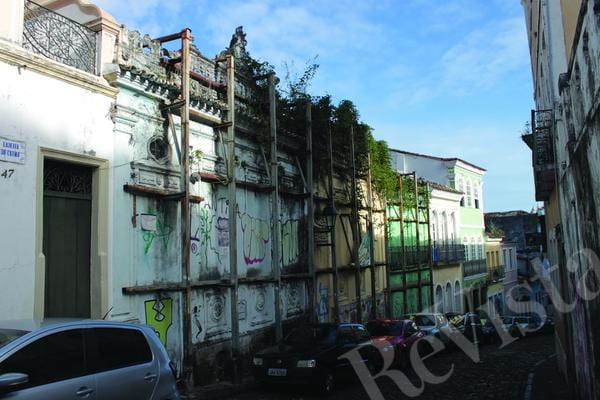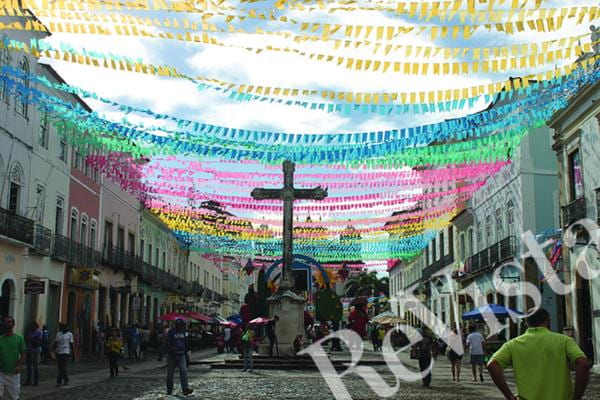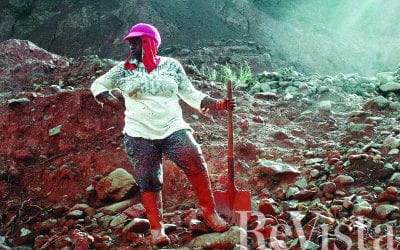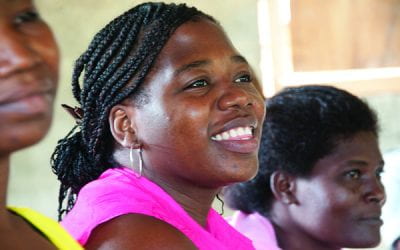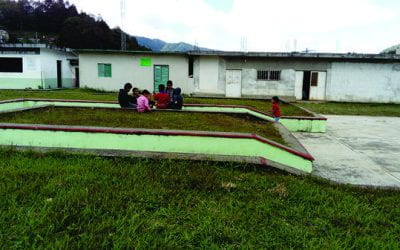Salvador de Bahia
Pelourinho as Inclusive Heritage
“Bom dia, moço! Todo bem? Bem-vindo à Bahia!” three enthusiastic women, one of them dressed as a typical Baiana, greeted me warmly at the tourism office at Salvador de Bahia in northeastern Brazil. It was my first time there, and I needed to know how to get from the airport to the famous Pelourinho.
As a second year student at the Harvard University Graduate School of Design, I’m investigating the relation between the preservation of the built heritage—frequently associated with UNESCO World Heritage Sites (WHS)— and issues of social injustice, spatial segregation and cultural inequality that inevitably arise around such touristic destinations.
Salvador de Bahia, the first capital of Brazil founded in 1549, is one of the oldest colonial sites of America and one of the 14 cultural World Heritage Sites of the country. The city’s historic downtown, known as Pelourinho, received UNESCO’s WHS status in 1985, and has undergone preservation and restoration processes ever since. Mainly financed by local and state governments, the preservation efforts have gradually rescued the old city’s historic quarters, which by the 1990s had fallen into total disrepair, focusing on preserving what UNESCO described as “the most important collection of baroque colonial architecture in the Americas.”
“What brings you to Salvador?” asks the Baiana as she hands me the touristic map and points towards the blue bus that will take me to the historic district. “Pelourinho and the Bahia de Todos os Santos, of course. Muito obrigado!” I answer as I go out of the airport and into Salvador’s humid 80°F winter.
As I arrive in the historic “Pelô”—as it is affectionately referred by locals—I keep admiring the colorful colonial houses with tiled roofs and wooden doors, the magnificent baroque churches and the stone-paved streets that I had only seen in books and websites. These historic sights dramatically disappear as I look for Rua de Sao Francisco, where I had previously booked a room in what supposedly was a centric and well-reviewed hostel.
“Did you come from the south side or the north side of the street?” David, the 40-year-old hostel owner, asks me as he extends the map and highlights the main touristic sites and best places to eat. “The south side,” is my answer. “Well, just walk the north side from now on, it’s better to avoid the south side when possible,” he insists, crossing out the ten blocks directly across the hostel that separate us from Praca da Se and Elevador Lacerda, two of the main attractions of the city center. “And do not go into this area at all, walk around it. It will be safer.”
As the most important city on the Bahia de Todos os Santos (Bay of All Saints), Salvador has always been divided into the Cidade Baixa (Lower City) and the Cidade Alta (Upper City). Geographically linked to the bay and its ports, the Cidade Baixa has always been the place for commercial activities, while the Cidade Alta, where the Pelourinho lies, has historically been the residential neighborhood and a center for culture, politics and religion—a hub of Afrodescendent pride. While back in the early 1990s governor Antonio Carlos Magalhaes made efforts to clean, preserve and make Pelourinho a safer place for both locals and tourists, a quick stroll around the historic district and a quick glance of the ladeiras (hillsides) that connect it with the Cidade Baixa demonstrate two very distinct scenes in the urban fabric.
After eating some acarajé, a popular street food made from blackeyed peas, and enjoying a plate of delicious acaí berries right by Largo Terreiro de Jesus, I head to Ladeira de Misericordia to visit one of the most famous restoration projects created by Brazilian architect Lina Bo Bardi. Built in 1980, the project was intended as the model that all future preservation endeavors should have aspired to emulate: 17th- and 18th-century buildings were restored and used for affordable housing; cheap prefabricated materials were used in order to keep low costs and public amenities were built in a vacant lot. Thus, I was shocked when I found Lina Bo Bardi’s project completely abandoned and in ruins, just like many of the buildings on the periphery of the Pelourinho.
The contrast between the UNESCO site and its surroundings became immediately apparent. The boutiques, artisan shops, cultural institutions, restaurants, coffee shops and hotels that abound in Pelourinho stop right by the Igreja de Sao Francisco to the south and by the Convento do Carmo to the north, with the majority of tourists walking exclusively around a very de ned perimeter. The preservation of the cultural and historic heritage helps to hide the social inequalities and security problems that still today afflict the periphery of the city center; tourists, attracted by the preserved area, generally just don’t go elesewhere.
Architects and planners have always aimed to restore the historic buildings of the Pelourinho in a democratic and inclusive way, but it is evident that the task is still incomplete. Many parts of the city have been neglected, even when their inherent beauty, historic value and economic potential is huge. And as with the buildings, the local population has also been forgotten.
As a student of architecture, I ask myself what would be the right approach. Is it really possible to rescue and transform the peripheries and ladeiras without displacing their inhabitants? How can preservation and restoration be done without gentrification? How can the touristic appeal proper to Pelourinho be used in favor of the surrounding low-income neighborhoods? How could the historic heritage value of Pelô benefit locals as well as visitors?
“This is going to be a very interesting thesis topic,” I think to myself while sitting on the steps of Monumento da Cruz Caida (Fallen Cross Monument), as I watch the sunset magically silver-plating the Bay of All Saints and its tranquil waters. I wish I had the answers already.
Winter 2018, Volume XVII, Number 2
Enrique Aureng Silva is an architect. Trained in Mexico City, he is currently working towards a Master of Design Studies in Critical Conservation at Harvard GSD. He is interested in the intervention, transformation and reuse of historic and old buildings in the Latin American context. When not practicing architecture, he writes ction in the form of short stories. Instagram: @e_aureng Personal blog: unadecalporlasquevan- dearena.wordpress.com
Related Articles
Afro-Latin Americans: Editor’s Letter
My dear friend and photographer Richard Cross (R.I.P.) introduced me to the unexpected world of San Basilio de Palenque in Colombia in 1977. He was then working closely with Colombian anthropologist Nina de Friedemann, and I’d been called upon by Sports Illustrated to…
Witches, Wives, Secretaries and Black Feminists
The issue of gender has been front and center for me, both as a subject of my fieldwork on black politics in Latin America, and how I conducted that research, particularly in how I…
Compañeros En Salud
English + Español
I have lived in non-indigenous rural Chiapas in southern Mexico since 2013, working with Compañeros En Salud (CES)—a Harvard af liated non-profit organization that partnered with…

